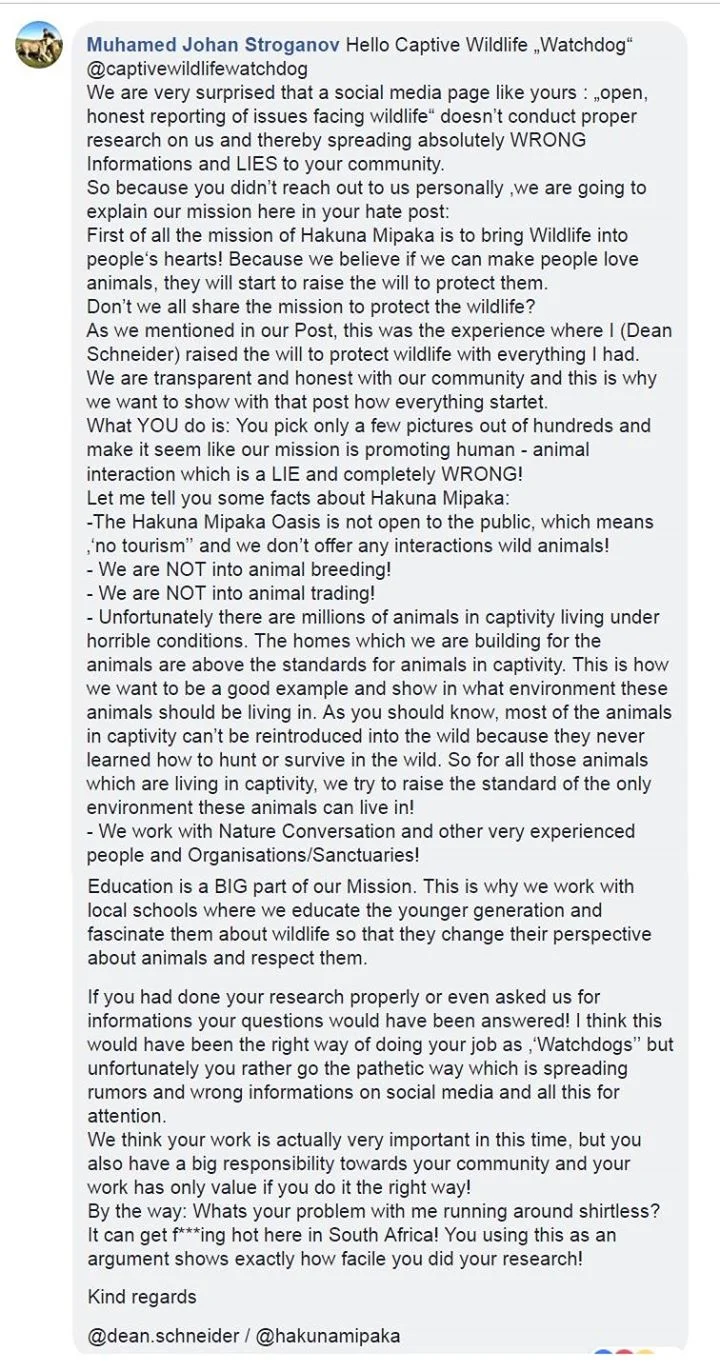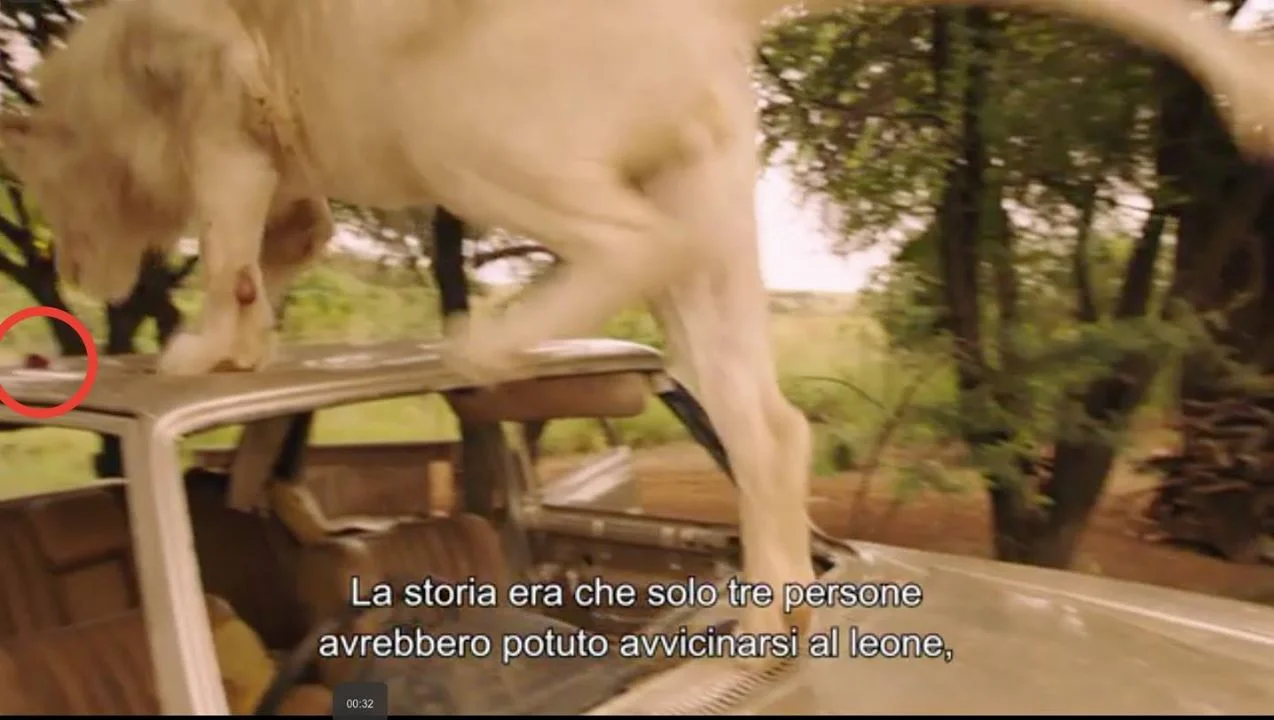Photo by Bank Phrom on Unsplash
How Reporting (Or Lack Thereof) Shapes Public Opinion
In the last 24hrs there’s been quite a dramatic (and growing) public reaction to several photos which were posted on Prince Harry’s official Instagram page. This Note is neither defending or criticizing Prince Harry. Rather, this Note is intended to showcase how the media can, and does, create hyperboles that sway a public who loves to join the proverbial dog pile–be it in criticism of something or support of it–without objectively examining the subject matter beforehand.
Case in point, the “edited” photos posted by Prince Harry who, according to a rather scathing article from the Daily Mail which has now gone viral, “notably avoided explaining the circumstances in which the images were taken”. From the tone of the Daily Mail’s article, titled “Drugged and tethered... what Prince Harry didn’t tell you about those awe-inspiring wildlife photos in Malawi” it’s clear that the Daily Mail feels Prince Harry lied to his fans and supporters by not explaining that he was able to take the impressive photos while the animals shown were under sedation.
As per the Daily Mail article, Prince Harry’s photos have been edited, and “don’t quite tell the full story.”
On Facebook, and other social media platforms the outrage over a privileged Royal taking advantage of a situation and misleading the public and their fans by showing them only the animals, and not the fact that those animals were actually tranquilized and in the case of the elephant, ropes were being employed to help control the eventual collapse of the sedated animal, which was in the process of being moved to another protected location.
How dare Prince Harry intentionally misrepresent the truth to his fans!
Another article from Yahoo News contends that a “simple crop masking” the “cruel reality” behind what led up to the photos, shows that the truth was intentionally hidden from followers of the Royal’s Instagram account. This article actually portrays the situation as though the animals were tranquilized and, in the case of the elephant, bound for no reason other than to allow Prince Harry to get close to them and take the photos which “left many royal watchers enthralled at the prince’s brave proximity to the imposing animal.”
THE REALITY:
The photos taken by Prince Harry, and posted to the Sussex Royal Instagram account which show an elephant and rhino, were snapped during the tranquilization and relocation of those animals. This was a necessary procedure, overseen by trained veterinarians, and experts. An animal going down under sedation can be terrifying, and horrifying to someone who’s never seen it. We all love to laugh at those “coming out of sedation” videos showing people trying, and failing, to get into cars, or sit in chairs after minor surgical procedures. But imagine if those people were animals weighing several tons, who didn’t speak your language and didn’t understand what was happening to them. There is a “twilight” period between full wakefulness and full sedation, in which motor functions are breaking down, or just returning, but cognizance hasn’t entirely faded, or entirely returned. During this period animals might stagger, and begin to fall, then try to catch themselves. Veterinarians monitor the sedated animals closely, and whenever possible, they do whatever they can in order to assure that the animals lay down as gently as possible, without causing undue trauma to themselves, or if they’re waking, that they stay on the ground until they’re fully awake and capable of moving again.
In the formerly famous, now-becoming-infamous uncropped photo of the “tethered” elephant, viewers can clearly discern that the elephant’s weight is shifted back onto its haunches, and the rope which has been given such evil connotations (but which in reality would create little, if any barrier to an un-sedated adult elephant) is helping prevent the elephant from moving forward.
Photo Credit, Prince Harry
The scrub wearing individual shown is applying pressure to the elephant in order to encourage it to continue leaning to the rear. In a situation like this, a sedated elephant falling onto its face could cause immense damage to its tusks, breaking them, or splintering them at the root, or even impaling itself on them. If the elephant goes down hind-end first, it is a much safer situation, and it is much more likely to avoid causing itself harm.
Photo credit Sussex Royal Instagram
Likewise, in the rhino photo, it’s clear that the animal’s legs are beginning to buckle, that its weight is being supported by the tree trunk. It might even have been steered toward this tree in order to achieve this result. With the tree under its head, the rhino’s haunches will go down first, assuring that it doesn’t smash face-first into the ground. And once its in a “sitting” position, it will flop over gently onto its side.
The public tends to react just as its currently reacting. With instantaneous outrage even though it doesn’t entirely understand what it’s being outraged over.
You rarely see uncut videos of wild animals coming out of sedation being posted for public viewing. Sometimes animals vocalize in disturbing ways, thrash, behave in highly unusual manners, etc. as they come out of tranquilization. This is completely normal, but it’s horrifying if you don’t understand what’s going on. For example, horses commonly have trouble “remembering how to breath” after being intubated and positioned on their back for surgery, and if this happens, vets will pounce on their prone sides with both knees in what seems a violent manner. In reality, the stimulation of forcing air from the horse’s lungs will cause it’s muscles to then contract and it will inhale, and regain a normal respiration rate. Other species have other pitfalls when it comes to sedation and transport. Images or videos showing such don’t sit well with the public so they aren’t something wild life experts toss out without considerable forethought. It’s also why many programs showing such procedures warn viewers that some of the images they see might be disturbing.
The animals in Prince Harry’s photos were not sedated so that Prince Harry could take photos of them. They were not detained solely for him to use as publicity shots. They were being tranquilized and relocated whether or not Prince Harry was present. He just had the opportunity to photograph them during the process.
What’s more–which is not mentioned in the articles criticizing Prince Harry’s photos (although the Yahoo article shows an image of it)–the images being derided were accompanied by a caption which addressed each one in turn, and which offered followers a brief explanation about what they were seeing. Although the blurb pertaining to the rhino shown does not specify that there’s any relocation process going on, the one pertaining to the elephant does specify that the elephant was part of a massive 500 elephant relocation event carried out by the African Parks Network, which by context alone informs viewers that there is human/elephant interaction occurring as part of a relocation process which would involve sedation, as these are wild animals.
Photo credit Sussex Royal Instagram
Photo credit Sussex Royal Instagram
But why let reality get in the way of your critical article lambasting a non-expert Prince for not telling the entire story about his photos to his Instagram followers?
Both articles plump up the sensational idea that Prince Harry intentionally cropped his photos to “hide the reality” of them from his fans and to create the idea that he’d intentionally gotten close to wild animals (which the Daily Mail article perversely suggests would be “thrilling”)
Both articles, whose authors presumably have a working grasp of how Instagram works, failed to acknowledge the fact that Instagram does require a square format, meaning that a rectangular photo will have to be cropped in some way, and instead, stressed the fact that Prince Harry’s representatives “refused to discuss the allegations” and instead “claimed” that the cropping had to do with Instagrams formatting. Their presentation intentionally portrays spokespersons as trying to shunt the blame onto a social media platform, without admitting that Instagram does require a rectangular image to be cropped. Whether or not the image could have been posted with the inclusion of the rope we don’t know, but we do know that part of the image did have to be cropped in order for it to be uploaded to Instagram. This isn’t a “claim” by Harry’s representatives, it’s just a fact.
Both articles fail to provide readers with a full and thorough explanation of what was going on–despite that the main premise for their publication is to call out Prince Harry for failing to explain the truth behind them. And both articles linked to here in our Note specifically showcase only two or three out of eight posted photos, even though the other photos don’t contain detailed background information either. We as viewers don’t know whether the photo of the Okavango was taken from shore, in a boat, while wading in the water etc. but it’s not being splashed across various news sites with headliners like “Drugged and tethered” or “Cruel reality”. We as viewers don’t know whether fire scorched trees shown were burned in a fire started by humans, but the image isn’t being called out for lacking a background or “reality” provided to the public. Was the photo of the Guyana forest taken from a plane? A cliff? A hang glider? Did Harry climb up into the canopy? We don’t know, and yet the lack of that information doesn’t seem to bother any of the news outlets which are calling Harry a liar for not explaining similar information about other photos included in the post.
And here’s the real shocker (read that sarcasm)
Both these articles also conveniently fail to own up to the hypocrisy of their host publishers when it comes to their self-righteous outrage at “staged” photographs the purveyors of which dared to not forthrightly explain the full background to viewers.
The Daily Mail has happily piled accolades atop photographer David Yarrow for his “breathtaking and powerful” photographs of “iconic creatures in their natural habitats” lavishing praise on Yarrow because he “spent time studying the beast’s behaviour to get the perfect shot.”
This is, at least in the case of some of the photos shown in the admiring Daily Mail articles, a complete lie. Yarrow had not spent time studying the behavior of the lions featured in the Dinokeng area. Those lions belong to Kevin Richardson. They were bred in captivity, hand raised by Richardson, and trained to respond to his instructions, be that walking down a certain trail toward Yarrow’s positioned camera, or leaping a creek in order to provide Yarrow with the perfect shot “that reveals the wonder of the animal kingdom as the king of beasts jumps over a stream.”
Photo credit David Yarrow. One of Richardson's trained lions performing for the camera.
In fact, the lioness gracing the cover of Yarrow’s book Wild Encounters, which is touted in another Daily Mail article isn’t a wild animal at all, but one of Kevin Richardson’s hand raised captive lions, whom the famed “Lion Whisperer” hires out to film movies, ads, and tv shows. It’s an animal trained to perform for positive reward from Richardson.
Cover of Yarrow's book, photo credit David Yarrow
Let’s not even get started on the fact that at least one image by Yarrow in the above shown book is of a captive, trained wolf strolling along a public bar top while actual patron’s fill the room.
Funny. In their articles lavishing praise on David Yarrow for his images of “wildlife”–which often portray captive, trained animals in staged scenarios, openly marketing those staged images as “wildlife in their natural habitat”–the Daily Mail didn’t think it was important to explain the “reality” behind those photographs to its readers. Yet it’s criticizing Prince Harry for not doing the same now.
Yahoo News, the host site for the second above-linked article, doesn’t seem to think it’s important to “tell the whole story” to viewers either. In this video spotlight about Yarrow, Yahoo News touts his photos as “striking images of wildlife on Chicago streets” without explaining to viewers that the “wildlife” is captive bred, hand raised animals trained to perform. Some of those same photos are included in Yarrow’s “Wild Encounters” book, highly acclaimed for portraying “wild animals in wild habitats” even though the animals shown aren’t wild at all.
In another photo article Yahoo News gushes over Clara Delevingne “posing topless next to a wild lion” when the lion in question is, in fact, a captive bred, hand raised, and trained lion belonging to Kevin Richardson, who hires out his lions for use in ad campaigns. The fact that the lion being used is captive bred, hand raised, and trained isn’t even mentioned when Cara refers to it as a “wild” animal. Considering that Yahoo News has now gravely taken it upon themselves to inform the public of “The cruel reality behind Prince Harry's wildlife photography” you’d think they’d explain to their readers that the “wild lion” described in their own article wasn’t actually wild. Just saying.
In a longer text article from 2015, Yahoo News praised Richardson for his special bond with his own lions while not bothering to explain to readers that those lions were bred for interaction and cub petting with the paying tourists who visited Lion Park, or that Richardson happily participated in these processes. Since Yahoo News claims that Prince Harry was obligated to inform his followers of the details behind his photos, isn’t Yahoo News obligated to inform readers of the details behind Richardson when their article is focused on him?
But then, the article Yahoo News put out pertaining to Richardson was capitalizing off Richardson’s interactions with his lions, and how special it was. To inform readers that he was participating in the cup petting industry would thwart his presence in the article as a special expert, someone who was somehow better than the tourists who wanted to experience the same interactions. Likewise, the Daily Mail’s articles regaling readers with the beauty of Yarrow’s (staged) photos wouldn’t have near the impact if they were open about the fact that the photos contained hand raised, trained animals, rather than wild animals in wild places.
Honesty, it seems, only matters to news sites like the Daily Mail and Yahoo News, when criticizing a Royal for a perceived lack of it will help create a viral story. But when being honest about something doesn’t serve their purpose, then honestly isn’t important at all. It’s unfortunate, then, that so much of the public will eagerly take these often-times intentionally misleading articles, designed to create a stir, rather than provide full and impartial information, at face value, and will allow such articles to shape their opinion of the subject matter involved. Prince Harry isn’t perfect, but he’s not an expert on wildlife, he’s just a privileged guy posting photos to an Instagram account.
If the new agencies, and the public public think that someone who isn’t directly involved with large scale conservation, and someone who isn’t an expert on big cats, elephants or rhinos should be obligated to provide detailed, and complete information about every wildlife photo he posts in the name of encouraging conservation and the protection of wildlife, then those same news agencies and public should be demanding the same detailed and complete information of such well known figures as Kevin Richardson and David Yarrow and the images they use and promote in the name of encouraging conservation and the protection of wildlife.





























































































